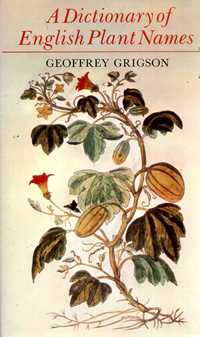
You may never have wondered about the etymology of vernacular names for plants, but Geoffrey Grigson, author of A Dictionary of English Plant Names (Allen Lane, 1974), has. Why exactly is ‘henbane’ (Hyoscyamus niger) the bane of hens, aside from the fact that it is toxic? It might be because the plant thrives on disturbed or hen-scratched earth, where hens would be more likely to find and consume its poisonous seeds (which will either stun or kill them). [There is a more recent interpretation suggesting that the ancient root hen meant death, but the meaning was lost, and relating the name to domestic fowl filled in the knowledge gap. Source: An Analytic Dictionary of English Etymology by Anatoly Liberman, University of Minnesota, 2008]
The folk history of traditional English plant names is colorful and captivating. ‘Brank-ursine’ is a 15th century name meaning bear’s claw, describing the shape of an Acanthus mollis flower. One common name for Sedum telephium is ‘Midsummer Men,’ originating in a loves-me-loves-me-not game of the 17th century in which cook-maids and dairy-maids placed pairs of stems in chinks in the wall and waited to see if they inclined toward or away from each other. Every time I consult this book I learn something new and fascinating.